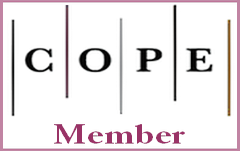| 1 Saveetha Medical College and Hospital, Chennai, India |
Abstract
Al-Hayani, A. M., El-Aziz, G. S. A., Eldeek, B. S., & Hammad, S. (2008). Evaluation of using the interactive multimedia in teaching Anatomy. Benha Medical Journal, 5, 12–15.
Bandyopadhyay, R., & Biswas, R. (2017). Students’ perception and attitude on methods of Anatomy teaching in a Medical College of West Bengal, India. Journal of clinical and diagnostic research, 11(9), AC10–AC14. doi:10.7860/JCDR/2017/26112.10666
Chapman, S. J., Hakeem, A. R., Marangoni, G., & Prasad, K. R. (2013). Anatomy in medical education: perceptions of undergraduate medical students. Annals of Anatomy, 195(5), 409–414. doi:10.1016/j.aanat.2013.03.005
Davis, S. E., & Dargusch, J. M. (2015). Feedback, iterative processing and academic trust – Teacher Education students’ perceptions of assessment feedback. Australian Journal of Teacher Education, 40(1), 10. doi:10.14221/ajte.2015v40n1.10
Densen, P. (2011). Challenges and opportunities facing medical education. Transactions of the American Clinical and Climatological Association, 122, 48–58.
Epstein, R. M. (2007). Assessment in medical education. The New England Journal of Medicine, 356(4), 387–396. doi:10.1056/NEJMra054784
Gune, A. R., More, S. S., Satpue, S. P., Wagh, D. T., & Nikam, V. R. (2018). Perception of first year MBBS students on self-directed learning in Anatomy: Improves concept, retention and communication skills. Journal of Medical Science and Clinical Research, 6(4), 478–482. doi:10.18535/jmscr/v6i4.79
Hassanzadeh, G., Hassanpoor, N., Jalali, A., Hassanzadeh, N., Jafari, M., & Panahi, N. (2012). Teaching anatomy: Viewpoints of Iranian anatomists. Thrita, 1(2), 62–66. doi:10.5812/thrita.6434
Houlden, S., & Veletsianos, G. (2020, March 12). Coronavirus pushes universities to switch to online classes – but are they ready? The Conversation. Retrieved from https://theconversation.com/coronaviruspushes-universities-to-switch-to-online-classes-but-arethey-ready-132728
Jaiswal, R., Sathe, S., Gajbhiye, V., & Sathe, R. (2015). Students perception on methods of Anatomy teaching and assessment. International Journal of Anatomy and Research, 3(2), 1103–1108. doi:10.16965/ijar.2015.161
Kirschner, P. A., Sweller, J., & Clark, R. E. (2006). Why minimal guidance during instruction does not work: An analysis of the failure of constructivist, discovery, problem-based, experiential, and inquiry-based teaching. Educational Psychologist, 41(2), 75–86. doi:10.1207/s15326985ep4102_1
Kooloos, J. G., de Waal Malefijt, M. C., Ruiter, D. J., & Vorstenbosch, M. A. (2012). Loosely-guided, self-directed learning versus strictly-guided, station-based learning in gross anatomy laboratory sessions. Anatomical Sciences Education, 5(6), 340–346. doi:10.1002/ase.1293
Knowles, M. S., & Associates. (1984). Andragogy in Action. Applying Modern Principles of Adult Education. San Francisco, CA: Jossey Bass.
Kramer, B., & Soley, J. T. (2002). Medical student perception on problems in Anatomy. East African Medical Journal, 79(8), 408–414. doi:10.4314/eamj.v79i8.8826
Leslie, S. (2017). Designing an interactive web-based tutorial for health sciences students: A collaborative library project. Medical Reference Services Quarterly, 36(1), 90–96. doi:10.1080/02763869.2017.1259925
Melnyk, Yu. B., & Pypenko, I. S. (2020). How will blockchain technology change education future?! International Journal of Science Annals, 3(1), 5–6. doi:10.26697/ijsa.2020.1.1
Melnyk, Yu. B., Pypenko, I. S., & Maslov, Y. V. (2020). COVID-19 pandemic as a factor revolutionizing the industry of higher education. Rupkatha Journal on Interdisciplinary Studies in Humanities, 12(5), 1–6. doi:10.21659/rupkatha.v12n5.rioc1s19n2
Melnyk, Yu. B., Yekhalov, V. V., & Sedinkin, V. A. (2020). The role and influence of “clip thinking” on the educational process in medical education. Interdisciplinary Journal of Virtual Learning in Medical Sciences 11(1), 61–64. doi:10.30476/IJVLMS.2020.85375.1019
Murad, M. H., Coto-Yglesias, F., Varkey, P., Prokop, L. J., & Murad, A. L. (2010). The effectiveness of self-directed learning in health professions education: a systematic review. Medical Education, 44(11), 1057–1068. doi:10.1111/j.1365-2923.2010.03750.x.
Nagar, S. K., Malukar, O., Kubavat, D., Prajapati, V., Ganatra, D., & Rathwa, A. (2012). Students’ perception on anatomy teaching methodologies. National Journal of Medical Research, 2(1), 111–112.
Obad, A. S., Peeran, A. A., Shareef, M. A., Alsheikh, W. J., Kalagi, D. A., AlAmodi, A. A., … Yaqinuddin, A. (2016). Assessment of first-year medical students’ perceptions of teaching and learning through team-based learning sessions. Advances in Physiology Education, 40(4), 536–542. doi:10.1152/advan.00001.2016
O’Byrne, P. J., Patry, A., & Carnegie, J. A. (2008). The development of interactive online learning tools for the study of Anatomy. Medical Teacher, 30(8), e260–e271. doi:10.1080/01421590802232818
Punja, R., Sumalatha, S., & Hosapatna, N. (2019). Perspective of the 1st year undergraduate medical students in learning Anatomy. Journal of the Anatomical Society of India, 68(2), 129–132. doi:10.4103/JASI.JASI_59_19
Rafique, S., & Rafique, H. (2013). Students’ feedback on teaching and assessment. Journal of Pakistan Medical Association, 63(9):1205–1209.
Riggs, S. (2020, April 15). Student-centered remote teaching: Lessons learned from online education. Educause Review. Retrieved from https://er.educause.edu/blogs/2020/4/student-centered-remote-teaching-lessons-learned-from-online-education
Shamkuwar, S., & Mokhasi, V. (2018). Students perception on internal assessment in Anatomy. International Journal of Anatomy and Research, 7(3.3), 6939–6943. doi:10.16965/ijar.2019.264
Smythe, G., & Hughes, D. (2008). Self-directed learning in gross human anatomy: assessment outcomes and student perceptions. Anatomical Sciences Education, 1(4), 145–153. doi:10.1002/ase.33
Tabish, S. A. (2008). Assessment method in medical education. International Journal of Health Sciences, 2(2), 3–7. Retrieved from https://ijhs.org.sa/index.php/journal/article/view/44
Zimmerman, J. (2020, March 10). Coronavirus and the great online-learning experiment. Chronicle of Higher Education. Retrieved from https://www.chronicle.com/article/Coronavirusthe-Great/248216
Chakrabarti Sudakshina – https://orcid.org/0000-0003-1344-8317; Doctor of Medicine, Associate Professor of Anatomy, Saveetha Medical College and Hospital, Chennai, India.
Vidya Bhansali Miss – https://orcid.org/0000-0002-8827-2216; Saveetha Medical College and Hospital, Chennai, India
| |
APA
Chakrabarti, S., & Vidya, B. M. (2020). Perception of Students on Online Self-Assessment Tool in Anatomy During COVID-19 Crisis. International Journal of Science Annals, 3(2), 16–22. https://doi.org/10.26697/ijsa.2020.2.3
Harvard
Chakrabarti, S., & Vidya, B. M., 2020. "Perception of Students on Online Self-Assessment Tool in Anatomy During COVID-19 Crisis”, authors Batuchina A., Straksiene G.". International Journal of Science Annals, [online] 3(2), pp.16–22. viewed 20 December 2020, https://culturehealth.org/ijsa_archive/ijsa.2020.2.3.pdf
Vancouver
Chakrabarti S., Vidya B. M. Perception of Students on Online Self-Assessment Tool in Anatomy During COVID-19 Crisis. International Journal of Science Annals [Internet]. 2020 [cited 20 December 2020]; 3(2):16–22. Available from: https://culturehealth.org/ijsa_archive/ijsa.2020.2.3.pdf https://doi.org/10.26697/ijsa.2020.2.3












